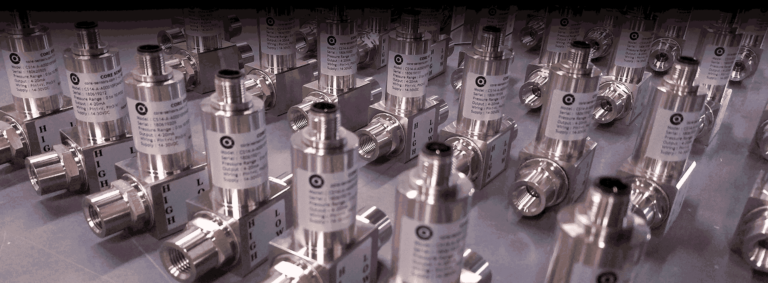We can proudly offer a range of custom pressure sensors/transducers to meet the specific requirements of each customer’s application. Selecting the correct sensor can be an intensive task. Together with our manufacturing partners Core Sensors, Emerson Paine and Merit Sensor™️, we are committed to delivering the best solutions for every project. Our engineers are on hand to help narrow down the best end product; if we are not able to provide an off-the-shelf sensor that fits your application, we can explore the avenue of configuring a custom pressure sensors. Below are some examples of how these sensors can be customised:
Process Connections & Fittings
The process connections or fittings of a pressure sensor is a critical component that can be customised to ensure seamless integration into various systems. By adapting the connection we are able to find allows for a perfect fit with the customer’s existing setup or find a best match for the location or environment that the sensor is to be used . This enables the sensors to be easily installed in a wide range of applications such as Aerospace, Downhole. Oil & Gas and Subsea, enhancing functionality and reliability. Our manufacturers offer various connections including Male NPT connectors, UNF, Autoclave, E3, E4, Double o-ring, Differential o-ring, Weldable tube, Internal pipe and Adapters.
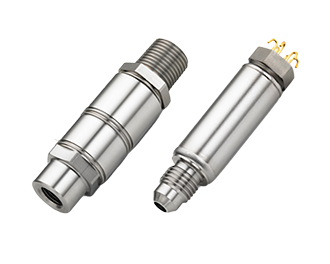
Output Signal
Customisation of the output signal is another bespoke option offered by our manufacturers. This modification enables the pressure sensors to communicate effectively with the customer’s equipment, ensuring that data transmission is both smooth and efficient. Whether the requirement is for analogue or digital signals, adjustments can be made to meet the specific communication protocols of the application, facilitating accurate data interpretation. Selecting the appropriate output signal depends on a few pieces of information regarding the application. Is this an existing setup where the output signal is already defined? What is the supply voltage available to power the sensor? How far do you need to transmit the output signal of the sensor? All of these application questions will help guide us to the most appropriate output signal. Some of the options we can offer are:
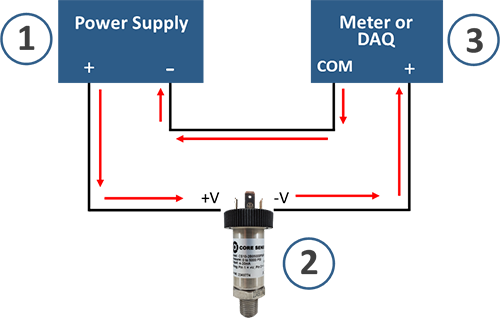
- 4-20mA
- Voltage output signals (0-5V, 0-10V, 1-5V, 1-6V, 1-10V, 0.5-4.5V ratiometric, 0.5-2.5V non-ratiometric, etc.)
- Millivolt output signals (10mV/V, mV uncompensated, etc.)
- Digital: RS-232, RS-485, CANopen or SPI. Direct interface/connection to a host.
Pressure Range
Adjusting the pressure range of the sensors allows for accurate and reliable measurements across diverse operating conditions. This customisation ensures that the sensors can perform optimally within the specific parameters of the customer’s application, whether it involves low-pressure environments or high-pressure systems. By offering this flexibility, we can ensure that the sensors provide precise readings, critical for maintaining operational integrity and safety.
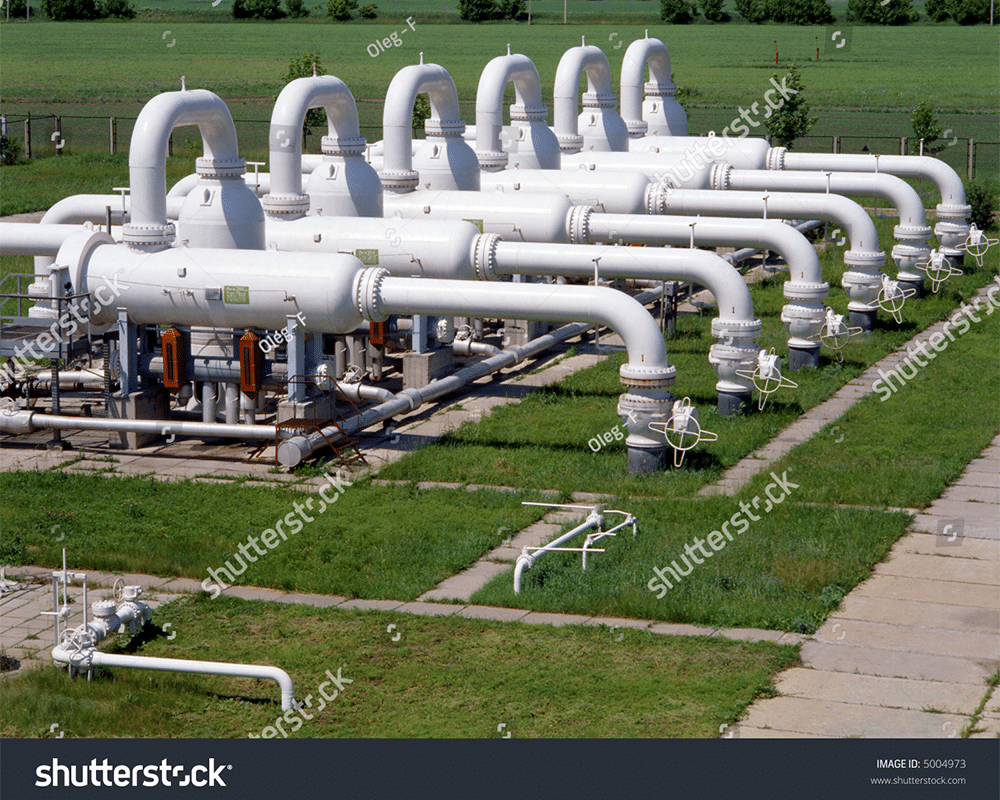
Electrical Interface
The electrical interface can also be customised to enhance compatibility with a broad array of devices and ensure the suitability of the connection for the application environment. This tailor-made approach ensures that the sensors can be effortlessly connected to the customer’s equipment, promoting ease of use and integration. Our manufacturers offers a variety of electrical terminations to fit just about any installation. Customers can expect connectors such as:
- Standard Cables
- High temperature Cables
- Solder Hooks (pig-tails)
- DIN 43650-A and C
- M12x1
- Packard Metripack 150
- 6-Pin Bendix
- Deutsch DT04 3 Pin and 4 Pin
- Hermetically sealed connectors
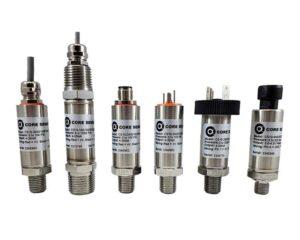
Certain product families have a limited selection of options due to hazardous certifications and design limitations.
Wetted Materials
One of the most important steps when specifying the appropriate sensor for your application is selecting the wetted material of the process connection (or pressure port). Understanding the operational location, temperatures, mounting and proximity to other devices is important. Selecting the proper material, connections and external surfaces of the sensor will help ensure reliable, long term operation.
Consideration of the media (fluid or gas) and temperature that will be measured is vital. The outside surface material (including inside the pressure port), or “wetted material” must be taken into consideration during the selection or design. If the wetted material is not compatible with the environment media being measured, your sensor will degrade over time. Please speak to one of out engineers to discuss the best material for your application.
Our manufacturers are able to offer the below materials on selects sensors:
- 17-4PH Stainless Steel (UNS S17400)
- 316L Stainless Steel (UNS S31603)
- Inconel 718 (UNS N07718)
- Inconel 725 (UNS N07725)
- Hastelloy* C276 (UNS N10276)
- Titanium BT9 (Grade 12)
*Hastelloy® is a registered trademark of Haynes International, Inc.
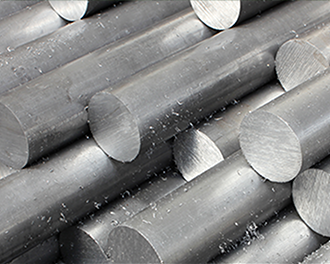
When creating a custom pressure sensors, each customisation option undergoes a thorough review on a case-by-case basis to assess feasibility and ensure that it meets the specific needs of the application. Rhopoint Components Ltd and our manufacturing partners are dedicated to providing support and expertise throughout the customisation process, ensuring that each sensor is perfectly adapted to deliver optimal performance and reliability.
Contact our engineering team for expert guidance and to explore our customisation options. 01342 330470 | sales@rhopointcomponents.com
